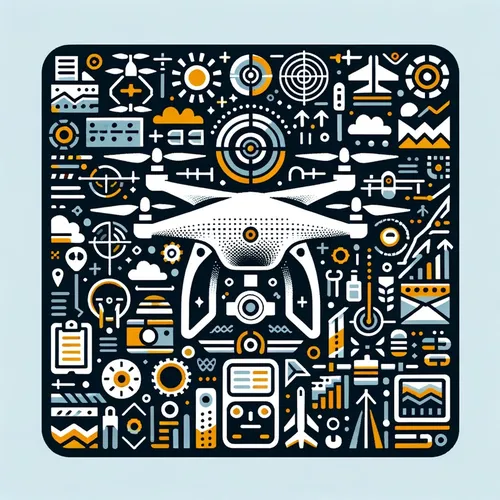Droning On: Juicy Secrets of the 55 Billion Dollar Flying Robot Industry
- Author
- Quiet. Please
- Published
- Wed 30 Jul 2025
- Episode Link
- https://www.spreaker.com/episode/droning-on-juicy-secrets-of-the-55-billion-dollar-flying-robot-industry--67186505
This is you Professional Drone Pilot: Flight Tips & Industry Updates podcast.
For professional drone pilots in 2025, it is an exceptionally dynamic time in the industry. As regulations clarify and technological innovation continues at pace, experienced operators and aerial specialists are finding both new opportunities and new requirements shaping their daily practice. According to Grand View Research, the global commercial drone market is valued at 30 billion dollars as of 2024 and is projected to reach nearly 55 billion dollars by 2030, driven by expanded demand in construction, inspection, media, logistics, and agriculture. This growth is matched by both regulatory progress and client expectations for data accuracy, safety, and fast turnaround.
Operators pushing the envelope of advanced flight techniques should be integrating route optimization and fully utilizing AI-driven flight planning solutions now available on leading enterprise platforms. These enable automated mapping, volumetric measurements, and real-time obstacle avoidance, dramatically increasing survey and inspection efficiency. Investing in drones equipped with LiDAR, multispectral, or thermal sensors provides clear differentiation, especially in markets like energy or large-scale agriculture. To maintain peak performance, regular firmware updates, battery health diagnostics, propeller checks, and sensor calibrations are essential. Simple routines, such as pre- and post-flight logs, reduce downtime and avoid costly on-site failures.
On the business side, the Drone-as-a-Service model has gained incredible traction. Many firms now prefer contracting experienced pilots to owning equipment themselves, which is opening doors for freelance pilots and boutique operators to access high-value mapping or inspection jobs without heavy capital expense. Client relations remain critical: be transparent about pricing, which can now incorporate hourly, project-based, or subscription models. Remember to communicate your certifications, insurance coverage, and compliance with government regulations, as commercial clients increasingly demand proof of professionalism and risk mitigation. For instance, the FAA and other agencies require commercial pilots to pass official knowledge exams, keep certifications current, and register all drones in use. Insurance is now virtually mandatory, often with requirements for at least one million dollars in liability—especially for urban or infrastructure operations.
Weather and flight planning continue to shape operations. Modern apps and services now deliver localized wind and precipitation alerts, which, combined with AI-powered risk assessments, help streamline go or no-go decisions and protect both equipment and reputation. Looking at current news highlights, investments in regulatory frameworks are making beyond visual line of sight operations viable. The United States has advanced FAA Part 17 rules, and European authorities are piloting similar changes, which is set to transform sectors such as logistics and remote infrastructure inspection. These changes allow drones to safely cover greater distances, opening up new market possibilities, particularly for drone delivery services and linear asset inspections.
Looking ahead, listeners should be prepared for continued integration of artificial intelligence and real-time data analytics, more robust airspace integration, and possibly mandated remote identification standards on all platforms. The service segment already outpaces hardware sales, so focusing on delivering unique, data-driven value will be critical as competition grows. In the coming week, review your operating procedures, update your certifications if needed, and assess your service offering to stay ahead in this evolving market.
Thank you for tuning in. Come back next week for more insights and strategies for professional drone success. This has been a Quiet...
